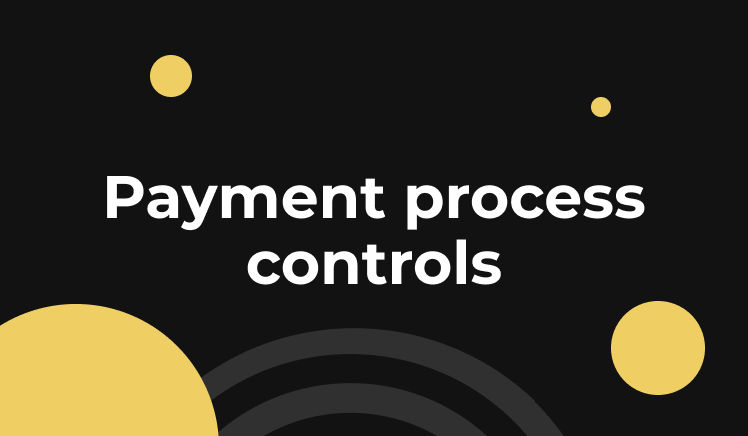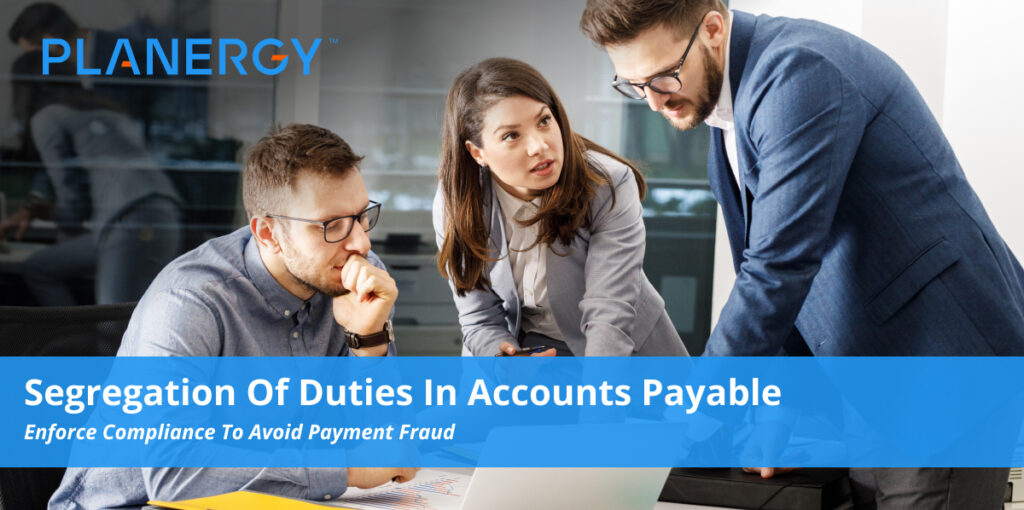In the current dynamic financial world, organizations and businesses need to have strong payment controls in place to protect their transactions and avoid fraud. Payment control procedures guarantee that payments are authorized, validated, and processed securely while remaining compliant with industry regulations. Strong payment control systems assist organizations in avoiding financial risks and making financial processes more efficient.

Understanding Payment Control Systems
Payment controls comprise a number of mechanisms intended to monitor and direct the movement of funds in an organization. These comprise internal payment controls that ensure detection and prevention of errors, improper transactions, and fraud. An effective payment authorization procedure guarantees that all payments are authorized by approved personnel prior to implementation.
Important Elements of Payment Controls
Payment Verification Methods
Payment verification techniques are very important in ensuring transaction accuracy and legitimacy. Such techniques involve dual authentication, multi-factor verification, and automated validation systems. Verification tools used by organizations include:
- Multi-factor authentication (MFA): Multiple credentials for access are required.
- Encryption protocols: Safeguards sensitive financial data.
- Biometric authentication: Fingerprint or facial recognition to approve payments.
- Transaction validation: Bank details cross-referenced with payment records.
Payment Approval Workflow
A formal payment approval process ensures transparency in financial transactions. It is usually a multi-level review and approval process prior to processing a payment. The process consists of:
- Initiation: The payment request is initiated.
- Review: A specific financial officer reviews the request.
- Approval: Management authorizes based on set thresholds.
- Execution: The approved payment is executed through the proper channel.
- Recording: The transaction is recorded for audit and reconciliation.
Payment Fraud Prevention
Payment fraud prevention is one of the major goals of payment controls. Fraud detection software, anomaly surveillance, and security with AI prevent fraudulent transactions. The most typical fraud prevention methods are:
- Automated fraud detection systems: Artificial intelligence-based monitoring of transactions for detection of unusual behavior.
- User access controls: Role-based restriction of access.
- Periodic employee training: Ensuring employees know what to watch out for.
- Vendor verification procedures: Verifying legitimacy prior to processing significant payments.
Payment Compliance Standards
Compliance with payment compliance standards helps organizations comply with regulatory requirements, including:
- PCI DSS (Payment Card Industry Data Security Standard): Regulates card payment security.
- SOX (Sarbanes-Oxley Act): Promotes transparency in financial reporting.
- AML (Anti-Money Laundering) regulations: Avoids financial crimes.
- GDPR (General Data Protection Regulation): Safeguards customer payment information. Compliance minimizes legal risk and maximizes financial integrity, ensuring organizations conduct business ethically and securely.
Payment Audit Checklist
A complete payment audit checklist allows companies to check transactions systematically, detect irregularities, and verify compliance with financial policies. The most important audit items are:
- Verification of authorization records
- Validation of transaction amounts and recipients
- Review of vendor contracts and invoices
- Detection of duplicate or fake transactions
Best Practices in Payment Risk Management
Execution of sound payment risk management practices enables the reduction of potential risks at the payment level. Some essential payment security aspects are encryption, tokenization, and secure gateways.
- Payment Policy Guidelines: Having clear guidelines for payment policy ensures standardizing procedures, minimizes inconsistencies within financial transactions.
- Payment Process Documentation: Having documentation of the detailed payment process makes sure that payments are accurately registered, and auditors and examiners can assess them more conveniently.
- Payment Transaction Monitoring: Real-time payment transaction tracking aids companies in identifying suspicious transactions and acting on security threats in a timely manner.
- Payment Reconciliation Process: Payment reconciliation process is about matching transactions with related records to determine differences and ensure correct information.
Segregation of Duties in Payment Control
Segregation of duties when it comes to payments is an important principle used to avoid fraud by ensuring that various people work on different parts of a transaction. This reduces the risk of making unauthorized payments.

- Initiator: Constructs the payment request.
- Reviewer: Verifies accuracy and conformity.
- Approver: Approves the transaction.
- Executor: Applies the payment.
Creating a Payment Control Framework
A good payment control framework involves clearly defined policies, tools, and methodologies supporting organizational objectives as well as best practices in industry.
- Payment Control Checklist: Effective payment control checklist ensures that everyone follows all requirements before making a transaction. The checklist includes assurance of authorization, approval, as well as adherence.
- Payment Control Audit: Performing periodic payment control audits assists organizations in assessing the quality of their financial processes and points to potential areas of improvement.
Technological Advancements in Payment Controls
- Payment Control Software & Automation: As financial technology continues to evolve, payment control software and payment control automation simplify transaction approvals, fraud identification, and compliance monitoring.
- Payment Control Training and Implementation: A good payment control training guarantees that staff members appreciate financial security. Adequate payment control implementation seamlessly includes these systems within day-to-day operations.
- Payment Control Assessment and Policy Development: Ongoing payment control assessment ensures the effectiveness of current controls, while an effective payment control policy defines best practice and compliance procedures.
Monitoring and Evaluating Payment Controls
- Payment Control Procedures Manual: A highly documented payment control procedures guide acts as a guide to employees for continuous usage of policies.
- Payment Control Standards and Guidelines: Adhering to payment control standards and payment control guidelines prevents organizations from losing financial discipline and operating inefficiency.

- Payment Control Objectives and Strategies: Definite payment control objectives direct organizations to set priorities, whereas payment control strategies present a path toward attaining financial security.
- Payment Control Techniques and Processes: Application of efficient payment control methods and payment control procedures aids organizations in tightening financial control and minimizing risks.
- Payment Control Documentation and Compliance: Thorough payment control documentation promotes transparency, whereas payment control compliance verifies compliance with regulatory standards.
- Payment Control Monitoring and Review: Ongoing payment control monitoring and payment control review assist organizations in staying ahead of future risks and making fact-based improvements.
- Payment Control Oversight and Responsibilities: Granting payment control responsibility and establishing payment control duties ensures an organization’s accountability.
- Payment Control Roles and Policies: Well-established payment control roles and payment control policies and procedures facilitate the flow of payments and enhance efficiency.
- Payment Control Internal Controls and Risk Assessment: Effective payment control internal controls combined with comprehensive payment control risk assessment enable organizations to ensure proactive management of financial risks.
- Payment Control Audit Program and Effectiveness: A structured payment control audit program analyzes the effectiveness of financial processes and improves the effectiveness of payment controls.
- Challenges in Payment Controls: While the advantages exist, organizations encounter difficulties in payment controls, including system integration issues, regulatory reform, and changing fraud patterns. Resolution of such challenges based on innovation and best practices provides a secure financial environment.
Conclusion
Effective payment controls ensure financial security, avoid fraud, and facilitate compliance with regulation standards. Through effective payment control processes, organizations are able to secure their transactions, improve transparency, and reduce financial risks. Additionally, constantly developing these controls using technology, training, and regular evaluation ensures long-term financial resilience and stability. Companies that anticipate enhancing their payment control system will be in a better position to address emerging threats, regulatory changes, and operational issues, protecting their financial ecosystem for future expansion.
FAQs
Why are payment controls necessary?
Payment controls are needed to stop fraud, facilitate compliance, and ensure financial security within a company.
What are some typical payment fraud prevention methods?
Typical methods involve multi-factor authentication, encryption, automated detection of fraud, and user access controls.
In what way do payment controls assist in compliance?
They assist in adhering to regulatory requirements such as PCI DSS, SOX, AML, and GDPR through the implementation of specified approval processes and monitoring of transactions.
What is the need for a payment audit checklist?
A payment audit checklist assists organizations to perform financial transaction review in a systematic way, raise red flags on discrepancies, and ensure compliance.
How does automation enhance payment control processes?
Automation simplifies transaction approvals, enhances fraud detection, and enhances overall financial management effectiveness.
What role does segregation of duties play in payment controls?
Segregation of duties ensures that different individuals handle payment initiation, approval, and execution, reducing the risk of fraud and unauthorized transactions.
How does real-time transaction monitoring improve payment security?
Real-time monitoring helps detect suspicious activities instantly, allowing organizations to take immediate action to prevent fraud or errors.
What are some key technological advancements in payment control systems?
Advances include AI-driven fraud detection, blockchain for secure transactions, automated approval workflows, and biometric authentication.
Why is regular training important for maintaining effective payment controls?
Employee training ensures awareness of fraud risks, compliance requirements, and best practices, strengthening overall financial security.
How often should payment control audits be conducted?
Payment control audits should be conducted periodically, typically quarterly or annually, to identify weaknesses, enhance compliance, and ensure efficiency in financial processes.
